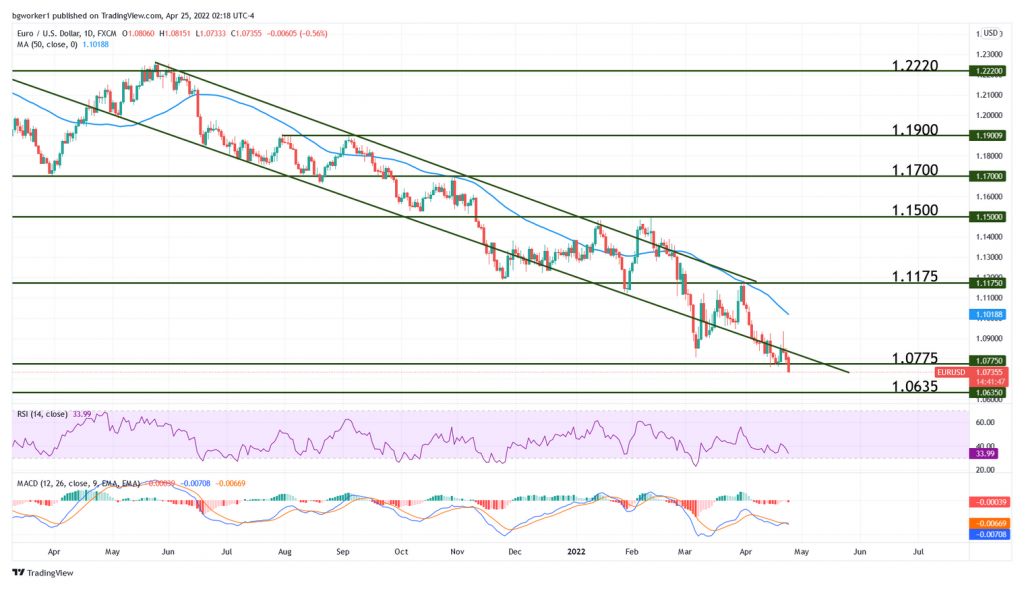EUR/USD: 2020 Lows Targeted as Interest Rate Gaps Continue to Widen
Greenback Steps on the Gas Pedal Heading Into April’s Last Trading Week.
The clear divergence between the monetary policies of Europe and the U.S. is likely to cause more downside for EUR/USD, which is already headed for the lowest point of 2020, located at 1.0635. The FOMC is likely to add 50 bps to the interest rate at the next meetings, while the ECB is still failing to provide a clear roadmap for the end of the APP (Asset Purchase Programme) and the first rate hike since the beginning of the pandemic.
The first potential ECB rate increase may come in July (although this timeframe is not certain) and by that time, the Fed may have already hiked by an additional 1% from the current <0.50%. This would make the gap even wider, thus weakening the Euro even more against the greenback.
At the time of writing the US Dollar Index (DXY) is trading at 101.60, a level last reached in March of 2020, while the EUR/USD is in free fall, having just broken the support at 1.0775 and trading at 1.0720.
Key Events for the Week Ahead
The last week of April is lacklustre, with only 2 major releases for the US Dollar. Thursday at 12:30 pm GMT, traders will take a look at the U.S. Advance GDP data, which is the main gauge of an economy’s overall performance. The expected number is 1.0%, which is a hefty drop from the previous 6.9%. The Advance version is the first out of three (Advance, Preliminary, and Final), and thus tends to have the utmost impact on the greenback.
The second and last major release of the week will be the U.S. Core PCE Price Index, which shows the change in the price paid by individuals for the goods and services they purchase, excluding food and energy. It is rumored to be the Fed’s favorite measure for inflation, which usually has a strong impact on the USD. The forecast is a change of 0.3% compared to the previous 0.4%; the data will be released Friday at 12:30 pm GMT.
Technical Analysis – EUR/USD
The pair spent the better part of a year inside the diagonal channel seen on the chart, with only brief moments of movement outside the said pattern. Just recently, the price exited the channel again but failed to return inside it; also, the long-term support at 1.0775 is now clearly broken, which shows that the pair will probably spend a longer period outside the channel.
Taking into consideration the fundamentals (diverging policies of the Fed and ECB) as well as the technical side, it’s fair to assume that the pair’s next destination is the 2020-low located at 1.0635. This doesn’t exclude brief moments of upside movement, possibly coinciding with an oversold RSI.
